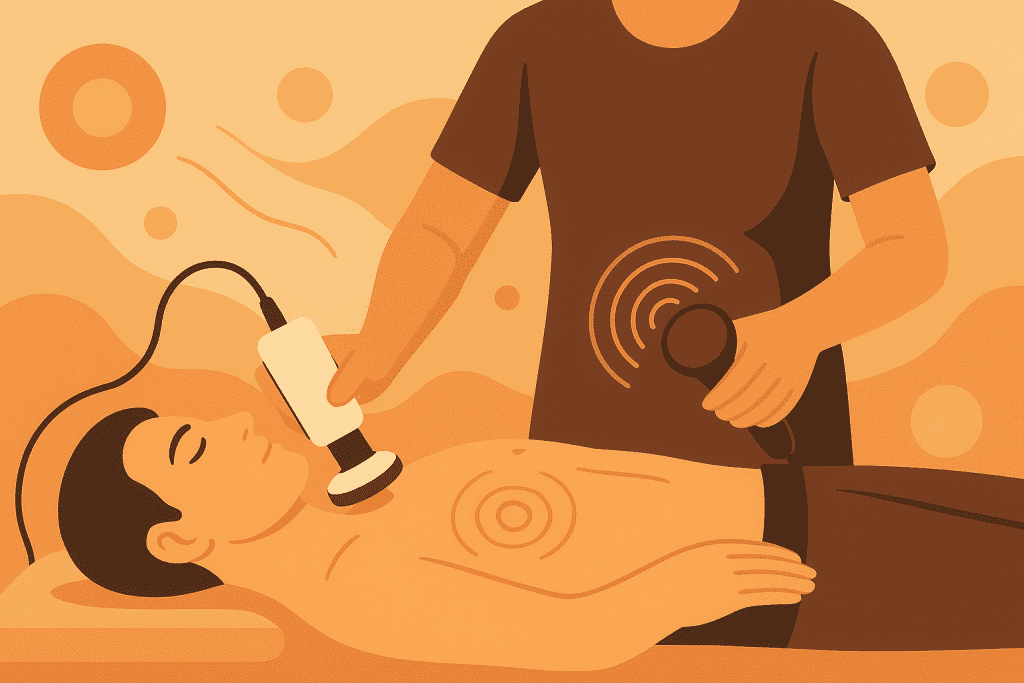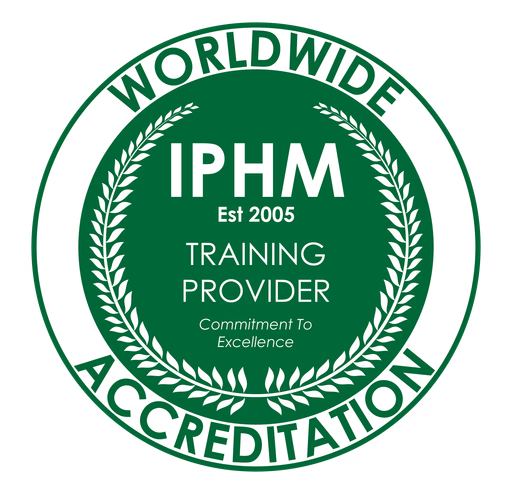
Understanding the basics
What “sound and vibration massage” really means
Sound and vibration massage uses audible sound waves and tactile vibrations delivered through instruments like bowls, gongs, tuning forks, drums, voice, or specialized furniture to encourage relaxation, release muscular tension, and nudge the nervous system toward balance. Related practices include sound massage, which employs vibrations and sounds such as Tibetan singing bowls for relaxation and energy balance, and vibrational therapy, which uses waves and frequencies to stimulate tissues and improve health. Think of it as massage where some of the “hands-on” work is done by waves of pressure moving through your tissues rather than continuous kneading, with the potential for healing effects.
Sound vs. Vibration two sides of the same coin
Every sound is vibration; the difference is whether you primarily hear it (air conduction) or feel it (bone/soft-tissue conduction). A crystal bowl droning across the room is mostly auditory; a weighted tuning fork resting on your shoulder is tactile. Good sessions blend both: sound to set the overall nervous-system tone, vibration to target specific areas. The frequencies emitted by different instruments can produce therapeutic vibrations that target specific needs, such as promoting relaxation, balancing energy centers, or enhancing mental well-being.
How it works on the body and brain
On a simple level, rhythmic, predictable stimuli tell your nervous system, “You’re safe.” Muscles let go, breathing deepens, and your attention drifts inward. Vibrations also mechanically “jiggle” tissues especially fascia around muscles helping stubborn areas soften. Some people compare the effect to a warm bath that soaks into the body’s “ropey” spots. These techniques can stimulate and have a stimulating effect on the body’s systems, activating energy flow and physiological processes, which often leads to a calming effect that promotes relaxation and well-being.
Entrainment, relaxation, and the nervous system
Slow, steady pulses and gentle drones can entrain your breath and heart-rate variability toward calmer patterns. These techniques can induce deep relaxation and a meditative state, helping to slow brain waves and promote mental calmness. Periods of intentional silence are part of the technique, too: they give your body space to integrate the wave you just felt.
Benefits and sensible cautions
Common goals (stress relief, focus, sleep)
- Downshift stress after a long day
- Re-center focus in the middle of a demanding workweek
- Support sleep onset with slow, steady tones
- Support sleep quality by promoting deeper relaxation and more restful sleep
- Help reduce anxiety through calming sound and vibration techniques
- Use sound and vibration massage to find peace and inner calm
- Ease neck/shoulder tightness when paired with mindful breathing
- Encourage gentler body awareness during recovery phases (always within medical advice)
Contraindications & when to consult a professional
If you’re pregnant (especially in the first trimester), have a pacemaker or implantable device, experience migraines or epilepsy triggered by strong sensory input, have recent fractures/surgery, an active clotting disorder (DVT), severe osteoporosis, or acute infections consult a clinician first. Pregnant women, particularly in their second and third trimesters, should seek medical advice before undergoing sound or vibration massage. Avoid placing heavy bowls directly on bony prominences or over medical implants, and keep intense gongs/drums brief and well-managed. When in doubt, gentler is better.
Pacemakers, pregnancy, recent surgery, migraines, etc.
- Pacemakers/implants: Avoid strong, localized vibration near the device to reduce the risk of adverse effects.
- Pregnancy: Skip bowls on the abdomen; choose softer, distal work to minimize potential adverse effects.
- Surgery/injury: No direct vibration on acute areas, as this may increase the chance of adverse effects.
- Migraine/epilepsy: Keep volume/modulation low and predictable to help prevent adverse effects.
- Ear conditions: Don’t blast sound close to ears; distance matters to avoid possible adverse effects.
Core tools used
Singing bowls (metal & crystal)
Metal (often called “Tibetan”) bowls offer warm, complex overtones; crystal bowls give clear, laser-like tones. Both can be struck or circled to sustain a drone. Metal bowls are friendlier for on-body placement because they’re sturdier and less resonant/sharp than large crystal bowls. Himalayan bowls and Himalayan singing bowls are widely used in sound massage and healing practices for their soothing sound, which promotes relaxation, harmony, and stress relief through gentle vibrations.
Tuning forks (weighted & unweighted)
Weighted forks (with discs) excel at on-body work placing the stem gently on muscle bellies, tendinous attachments, or paraspinal lines. They can be used to deliver localised vibration to specific muscle groups, effectively targeting areas of stiffness or tension. Unweighted forks shine for off-body “field” work, gentle sweeping, and relaxation near (not in) the ears.
Gongs, chimes, drums & didgeridoo
Gongs create huge, immersive sound-fields. Chimes punctuate transitions. A frame drum adds steady pulses that can entrain breathing. Historically, tribal drumming and gong playing have been central to traditional sound healing practices, used in rituals and ceremonies across cultures to promote physical, emotional, and spiritual health. A didgeridoo produces localized, tactile vibration especially effective for the back of the body (used with consent and safe distance).
Vibroacoustic furniture, speakers & percussion devices
Sound loungers and vibro-chairs route low frequencies through the body. These devices can deliver whole body vibration and gentle vibration, providing comprehensive effects on the whole body by promoting relaxation, balancing energy, and supporting overall well-being. Handheld percussive massagers (on low settings) can complement sound for short, targeted pulses used carefully, away from joints, throat, abdomen, and spine unless trained.
The session flow
Intake & intention setting
A quick conversation “What do you need today: sleep, focus, shoulder relief, or to enhance performance?” guides choices. That intention becomes your compass for instrument selection and pacing.
Matching technique to outcome
- Sleep/deep calm: slow bowls, long silences, low dynamics.
- Focus/reset: brief, brighter tones, steady drum pulse, clear endings.
- Body relief: weighted forks on trigger points, bowls near tight areas, calm breath, and techniques that can improve flexibility.
Grounding & breath priming
Start with two minutes of coherent breathing (about 5–6 breaths/min), feet or hands supported, jaw unclenched. This turns down sympathetic arousal and makes every technique more effective.
Layering sound, silence, and touch
Alternating wave (sound) → settle (silence) → check-in (touch/breath) creates a predictable arc the body can trust.
Technique set 1 Singing bowl methods
Perimeter playing & center striking
- Perimeter playing (rim-circling): Slow, steady friction along the rim builds a drone. Use for enveloping calm or to bridge between body areas.
- Center striking: A gentle, padded mallet strike sends a short, clean wave. Great for punctuation and transitions.
On-body placement for chest, abdomen, limbs
Small to medium metal bowls may rest on the upper back, thighs (specifically the thigh muscles), or calves (avoid the abdomen in pregnancy; use caution with bony spots). The goal isn’t volume; it’s a soft, brief pulse that the tissues can drink in.
Water-bowl micro-vibrations
A partly water-filled bowl produces rippling micro-vibrations when struck lightly. Place it near (not on) areas that feel “stuck” to add texture without intensity, helping to release trapped energy and restore the body’s natural flow.
Cautions for bony prominences
Avoid direct placement on the spine, knees, elbows, or clavicles. If you’re not trained, keep bowls off the head and neck entirely.
Technique set 2 Tuning fork protocols
Weighted forks for joints & trigger points
Weighted forks in the 64–128 Hz range are common for bone conduction. Typical sequence:
- Activate the fork gently on a rubber activator.
- Touch the stem lightly to the muscle belly or tendon attachment (e.g., upper trapezius, forearm extensors).
- Hold 8–12 seconds; remove; pause; repeat once or twice before moving on.
Weighted forks are also used in sports phys ther and sports med settings for rehabilitation and recovery, where they support evidence-based approaches to musculoskeletal treatment and enhance recovery protocols.
64–128 Hz bone conduction examples
- Neck/shoulder: Along paraspinals C3–T2 and upper traps’ mid-belly.
- Forearm/desk work: Common extensor tendon area (just distal to lateral epicondyle), then mid-forearm.
- Hips: Gluteus medius belly and greater trochanter vicinity (off the bone).
Unweighted forks for field work & relaxation
Sweep forks slowly 10–20 cm from the body to “comb” the space near the shoulders and torso. Use near the ears only at low volume and never strikingly loud.
Sweeping, bracketing & “listening” passes
- Sweeping: From crown to feet, 2–3 slow passes.
- Bracketing: Activate two forks (e.g., a fifth apart) and hold them near opposite sides of a tense area.
- Listening: Pause in silence for 10–20 seconds and feel for softening.
Technique set 3 Gong, drum & didgeridoo
Slow swells & wave technique on gong
Start whisper-quiet; build to a moderate swell; return to silence. One wave can be 60–90 seconds. Two or three waves are plenty for most people.
Managing intensity and space
Keep the gong several feet away. Angle it so reflections are softer. Watch breath and facial cues; if the client tenses, you dial it back.
Pulse entrainment with frame drum
A slow 50–70 bpm pulse (think resting heartbeat) can anchor the session. Play with a felt mallet for warmth, 60–90 seconds, then rest.
Localized vibration with didgeridoo (yidaki)
From a comfortable, respectful distance, aim the bell toward the back of the body (never the face/ears). Short 10–20 second phrases, then pause.
Technique set 4—Vibroacoustic & device-assisted
Sound lounger / vibro-chair workflow
Low frequencies (often 30–120 Hz) route through the furniture while ambient music or bowls provide an auditory layer. Sessions are typically 20–45 minutes with clear volume limits and check-ins.
Handheld percussive massagers at low settings
Use briefly on large muscle groups (quads, hamstrings, glutes). Avoid neck front, abdomen, spine, and bony points. Ten seconds per spot goes a long way.
Massage guns have become increasingly popular for muscle recovery and relief, but it’s important to follow safety considerations and use the massage gun properly to avoid potential side effects.
Safe zones vs. no-go zones
- Safe-ish: Thighs, calves, upper back (muscle belly only).
- No-go: Carotid triangle, kidneys (direct), abdomen (unless trained), surgical sites, varicose veins.
Technique set 5 Voice-based methods
Humming, toning, and vowel ladders
Your own voice is a built-in massager. Humming vibrates sinuses, throat, and chest; longer toning sustains a gentle wave through the torso.
Coherent breathing + gentle toning protocol
- Inhale 4–5 seconds through the nose.
- Exhale 6–7 seconds with a light hum (“mmm”).
- After 6–10 rounds, switch to soft vowel toning (“ah,” “oo”) for 3–5 rounds.
- Sit in silence for 60–90 seconds.
Building a 60-minute session
Sample sequences for three goals
Deep-calming (sleep) – 60 minutes
- Intake & breath prime (5 min): Coherent breathing, jaw release.
- Soft bowls near feet/legs (10 min): Slow perimeter playing; long silences.
- Weighted forks mid-back (10 min): Paraspinals, gentle cycles.
- Gong wave (6 min): One to two very soft swells.
- Voice toning (5 min): Quiet humming synced to breath.
- Crystal bowl drone (10 min): Low to moderate volume, then taper.
- Integration (14 min): Silence, light touch on shoulders, closing breaths.
Focused-reset (workday) – 45–50 minutes
- Intake & posture check (3 min).
- Frame drum pulse (5 min): 60–65 bpm, clears mental fog.
- Unweighted fork sweeps (7 min): Crown → feet, bracketing around shoulders.
- Crystal bowl single tone (8 min): Bright but modest volume; crisp stop.
- Short silence (3 min) then breath/toning (5 min).
- Closing chimes & stretch (5–7 min).
Neck/shoulder relief – 50–60 minutes
- Intake & movement check (5 min): Range-of-motion baseline.
- Weighted forks upper traps & paraspinals (12–15 min).
- Metal bowl near scapular region (8 min): Gentle center strikes, no on-bone.
- Drum pulse (4 min): Slow, steady to relax guarding.
- Unweighted fork bracketing (6–8 min): Either side of neck/shoulders.
- Quiet integration & breath (10 min).
- Re-check range; adjust self-care plan (5 min).
DIY techniques at home
Five-minute “reset” with humming & bowl
- Sit comfortably, inhale through the nose, exhale with a soft hum.
- Strike a small bowl lightly once every 20–30 seconds.
- After four minutes, stop and rest in silence for one minute.
10–12 minute evening wind-down
- 3 min coherent breathing.
- 4–5 min slow rim-circling on a bowl or a gentle ambient track.
- 2–3 min humming on the exhale.
- 2 min quiet sit. Lights low, screens off afterward.
Pairing with other modalities
Massage, breathwork, gentle stretching, mindfulness
A few minutes of cat-cow, neck CARs (controlled articular rotations), or supported child’s pose can prime tissues to receive vibration. Post-session, a short body-scan meditation helps lock in the calm.
Evidence, myths & realistic expectations
What research suggests vs. what it doesn’t
Early studies suggest sound/vibration can support relaxation, perceived pain relief, and mood—but responses vary. It’s not a cure-all, and frequency numerology claims (“this exact Hz fixes X”) are often overstated. Focus on skilled application, paced intensity, and your own felt sense.
Why practitioner skill and client preference matter
Two people can hear the same bowl and have opposite reactions. A good practitioner watches breath, face, and shoulders and adapts in real time. Your preferences are data share them.
Choosing a practitioner & setting
Credentials, hygiene, consent & communication
Look for clear policies, clean tools, and consent at every step. A practitioner should explain options (“bowl near the back or tuning fork on the shoulder?”) and never push through discomfort.
Aftercare and integration
Hydration, rest, journaling & pacing
Drink water, walk slowly, and give yourself 15–30 minutes before jumping into heavy tasks. If insights popped up, jot them down. If you feel spacey, eat a light snack and place bare feet on the floor for a minute.
Conclusion
Sound and vibration massage is less about fancy instruments and more about how waves are introduced: slow, safe, and responsive to your body. From singing bowls and tuning forks to voice toning and gentle drum pulses, the techniques range from broad, room-filling soundscapes to pinpoint tactile inputs. Start with clear intentions, keep volumes moderate, include silence, and let your nervous system set the pace. Whether you’re chasing better sleep, midday focus, or shoulder relief, there’s a thoughtful sequence that can meet you where you are.
Sound healing has deep historical roots, with ancient cultures using sound and vibration to heal the body and mind. Today, these sound healing techniques continue to be explored for their ability to promote physical, emotional, and spiritual healing.
FAQs
Common sensations: warmth, gentle tingling, slower breath, mental quiet. Afterward, you might feel loose, calm, or reflective. If anything feels sharp or overwhelming, speak up; the practitioner can dial it back.




